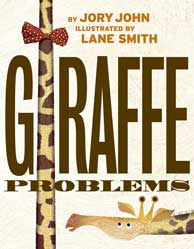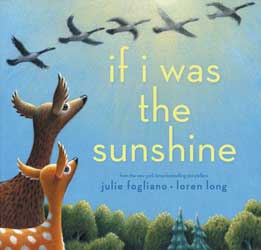Staff Picks

Children August 2019
Recommended by Mary Burns from Northeast Dade – Aventura Branch.
ArchiveIn partnership with

The Magic of Animals
Whether they be in our home, on a farm or out in the wild, nothing captures the imagination of children quite like animals. More often than not they show children the magic, innocence and goodness of their own hearts. It’s almost as if children can see their own reflection in the purity of an animal’s soul. This month’s book selections tap into the wonder that animals spark in children. If you’re not careful, you’ll fall in love with all of them right alongside your kids.
The Catawampus Cat
By Jason Carter Eaton, Illustrated by Gus Gordon
Cats are said to have the gift of nine lives, but a catawampus cat is slightly different. Its gift is in helping people gain a new perspective. Early one morning, a catawampus cat arrives in town, walking “slightly askew,” leaning to one side. The busy town and people take no notice at first and tick‑tock along as usual. Soon, though, the town grocer sees this odd‑leaning cat and tries unsuccessfully to straighten him with his angry wife eventually joining in. Then both of them tilt their heads to one side and unexpectedly, from the new angle, spot the wife’s long‑lost wedding ring underneath a produce stall! Estranged for 20 years, the grocer and his wife kiss and reconcile. Later on, the catawampus cat is seen by the bored town barber as he cuts a female customer’s hair in a long bob style. The barber tilts his head while watching this bizarre cat walk by, and snip! – he clips her hair at an angle. She immediately proclaims her love for her accidentally angled hairstyle. Everyone and everything in town is eventually touched by the remarkable catawampus cat.
Readers won’t forget the word “catawampus” after reading this hilarious tale, and they’ll love the twist at the end. Australian‑born illustrator Gus Gordon has written and/or illustrated nearly 80 books for children. The Catawampus Cat uses open, nonsensical collages that mix old and odd images, letters, maps and much more. (Ages 4‑8 years)
Check Availability
A Couch for Llama
Written and illustrated by Leah Gilbert
The Lago family has an old, worn and well‑loved couch at home; family members have snuggled, read, played cards, built forts out of seat cushions and even played hide and seek around it. Eventually, the family had put the couch through one too many good times, and so one day they hopped into the family car and drove off to buy a new couch: one that is not too big, not too small, but sized just right! After finding their new couch, they load it onto the roof of their car. On the drive home, however, the new couch accidentally rolls off the car roof (whoosh!) and into a field, where it is found by a llama named “Llama.” This strange, new, inanimate object fails to respond even after Llama partially eats, prods and then ignores the couch. Eventually, Llama figures out what the couch is really for – to rest on. When the Lagos family show up to reclaim their new couch, they find Llama has made their new comfy couch his own and he doesn’t want to return it. How can a compromise be reached? Find out when you read the rest of the story.
Leah Gilbert used to work in Boulder, Colorado, where she used to see llamas in a field while driving to work. One day, the llamas were gone, and in their place was a couch on the roadside. These two unique images together inspired the story, as well as her illustrations. (Ages 4‑7 years)
Check Availability
Giraffe Problems
By Jory John, Illustrated by Lane Smith
Edward the Giraffe has problems. He feels insecure and self‑conscious about his long, bendy neck – especially when he compares it to the necks of other animals. Edward tries everything to solve his neck issue – he even dresses it up and deliberately hides behind trees or in deep ditches and rivers. All the while, he wishes for a neck similar to those of his animal friends. Not even reassurances from Edward’s mom about his lovely neck or the exasperated objections from fellow animals can make Edward stop wishing for a different neck. Then one day he meets Cyrus the Tortoise, whose neck problems run in the other direction – Cyrus has almost no neck to speak of. Cyrus tells Edward of a lone, ripening banana that is hanging from a tree on a hill – a luscious yellow fruit that Cyrus longs to eat but cannot reach because his neck is too short. As Edward hears Cyrus’ problems, it finally puts his own problem into perspective, and a brilliant idea comes to him to solve the dilemma. In the end, both are able to save one another’s necks (sort of, anyway).
This simple story conveys messages of self‑acceptance and friendship. Enjoy the comical illustrations by Lane Smith, who makes use of various shapes, patterns and earth tone colors. Fold out pages allow readers to experience Edward’s perspective from an elevated perspective. (Ages 4‑6 years).
Check Availability
The Rabbit Listened
Written and illustrated by Cori Doerrfeld
We often forget how listening builds understanding and wisdom to make all our lives better. Taylor, a little boy, builds a new, special, amazing something, of which he is so proud. But then, the special something suddenly comes crashing down. Afterward, the first animal to approach Taylor is Chicken, who advises Taylor to talk about what happened; but Taylor does not feel like talking it out, so Chicken leaves. Bear comes next and tells Taylor to feel very angry and shout aloud about it; but Taylor does not feel like doing this either, so Bear leaves. Next, Elephant comes, knowing just what to do, as elephants do – to remember exactly the way things were. But Taylor does not feel like remembering, so Elephant leaves too. Other animal friends come as well – Hyena, Ostrich, Kangaroo and Snake, each with advice for Taylor. But Taylor still doesn’t feel like following their advice, so the animals all leave. Taylor is then alone, in the quiet, when Rabbit spots him and slowly comes closer and closer to him. What will Rabbit do differently to help Taylor?
In this universal tale of empathy and kindness, Doerrfeld is able to show us how listening to a friend is often the wisest way we can help him or her, as well as ourselves. She illustrates Taylor and the animals, particularly Rabbit, in a minimalist style, with soft, muted colors. The facial expressions and gestures of all characters are engaging and tender. The Rabbit Listened won the New York Times, Time Magazine and Wall Street Journal awards in 2018. (Ages 3‑5 years)
Check Availability
if i was the sunshine
Written by Julie Fogliano, Illustrated by Loren Long
This moving story about love and the surprising complexity of connection is told in call and response verse and also makes imaginative comparisons and connections (metaphors). The story begins with a rooster crowing at dawn and a girl and her mother walking across the field of their farm, eventually taking a seat and milking a friendly dairy cow looking on at both of them. A voice calls and then responds, “If i was the sunshine/ and you were the day/ i’d call you hello!/ and you’d call me stay.” Readers are left to imagine who the voices belong to – the sunshine, the girl, her mother, the rooster or the dairy cow? “You” could be any of them or even the readers. A little further on, readers’ eyes fall on a field of gorgeous wild flowers and an animal’s nose entering from the left. A voice calls and responds: “If i was a flower/ and you were a nose/ i’d call you sniff/ and you’d call me rose.” Readers will love identifying the nose’s owner: a big, black‑nosed, bright‑eyed, bushy‑tailed skunk delicately smelling a rose. The story continues with more calls, responses and imaginative comparisons between the girl, her mother, their animal brethren, their farm and the natural world, until nightfall comes and the story ends.
The verse in this story uses “you” and a lowercase “i” to convey a humble individual voice that is tender, gentle and open in tone, rather than simply closed, uncertain or wishful. Large, compelling images of people, nature and especially animals are beautifully colored and poised to bring the poetry to life. Authors Julie Fogliano and Loren Long are best‑selling, award‑winning authors and illustrators: Fogliano of And Then It’s Spring, A House That Once Was, and the poetry collection When Green Becomes Tomatoes; and Long of the Otis picture book series, President Barack Obama’s Of Thee I Sing and the newest version of The Little Engine that Could by Watty Piper, among other works. (Ages 4‑7 years)
Check Availability